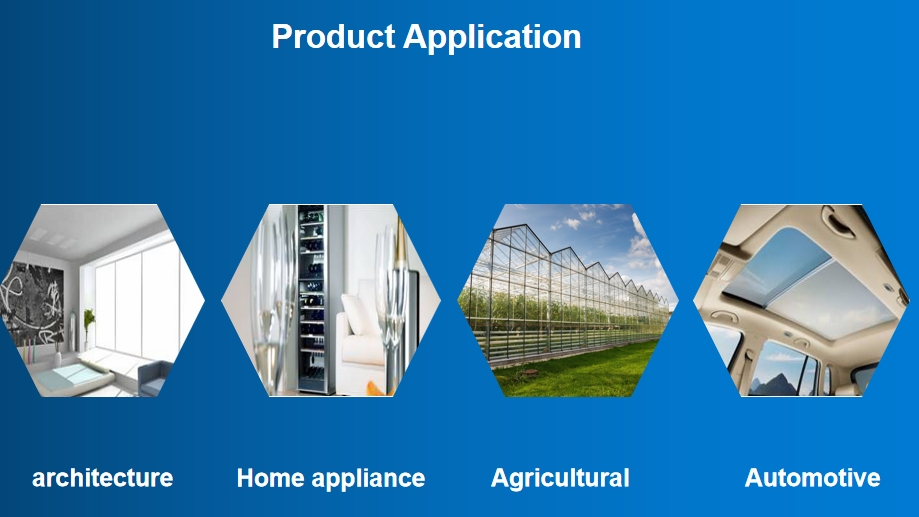Description
Vacuum Glass: A Solution for Historic Building Renovations

Vacuum Glass: A Solution for Historic Building Renovations
**Introduction**
Historic buildings are a testament to our cultural heritage, but they also present unique challenges when it comes to energy efficiency and modernization. Traditional methods of insulation and renovation can often compromise the structural integrity and aesthetic appeal of these structures. Vacuum glass, with its exceptional thermal insulation properties, offers a promising solution for renovating historic buildings without sacrificing their architectural and historical significance.
**The Dilemma of Historic Building Renovations**
Historic buildings are often subject to strict preservation guidelines that limit the types of materials and methods that can be used in renovations. At the same time, there is a growing need to improve the energy efficiency of these buildings to reduce environmental impact and operational costs. The challenge lies in finding materials and techniques that meet both the preservation requirements and the demands of modern energy efficiency standards.
**The Benefits of Vacuum Glass for Historic Buildings**
1. **Thermal Insulation**: Vacuum glass provides superior thermal insulation due to the vacuum seal between its two panes, which significantly reduces heat transfer.
2. **Aesthetic Compatibility**: Its slim profile and clear appearance allow it to blend seamlessly with historic architectural styles.
3. **Structural Integrity**: Vacuum glass does not add significant weight to the building, which is crucial for structures with load-bearing limitations.
4. **Durability**: With a long lifespan, vacuum glass requires minimal maintenance and replacement, reducing long-term costs and disruption.
**Challenges in Implementing Vacuum Glass**
1. **Cost**: The initial cost of vacuum glass can be higher than traditional glass, which may be a barrier for some renovation projects.
2. **Installation**: Specialized installation techniques are required to maintain the vacuum seal and ensure the longevity of the glass.
3. **Regulatory Compliance**: Adhering to historic preservation regulations while integrating modern materials can be complex.
**Case Studies**
- **European Historic Buildings**: An analysis of vacuum glass implementation in various European historic buildings, showcasing successful integration and energy savings.
- **North American Adaptive Reuse**: Examples of how vacuum glass has been used in the adaptive reuse of historic buildings in North America, maintaining the architectural charm while improving energy performance.
**Technological Advancements**
- **Smart Glass Integration**: The incorporation of smart glass technologies that can adjust light transmission based on environmental conditions, further enhancing energy efficiency.
- **Historical Aesthetics**: Developments in manufacturing processes that allow for the customization of vacuum glass to mimic the appearance of traditional windowpanes.
**Regulatory and Preservation Considerations**
- **Preservation Guidelines**: An overview of how different countries and regions approach the use of modern materials in historic building renovations.
- **Certification Programs**: Discussion of certification programs like LEED and Passive House that encourage the use of energy-efficient materials while respecting historical integrity.
**The Role of真空玻璃 in Sustainable Development**
- **Energy Conservation**: The role of vacuum glass in reducing energy consumption and lowering carbon emissions.
- **Sustainable Renovation**: How vacuum glass fits into broader sustainable renovation strategies for historic buildings.
**Conclusion**
Vacuum glass presents a unique opportunity to reconcile the demands of historic preservation with the necessity for energy-efficient building practices. With careful consideration of cost, installation, and regulatory compliance, vacuum glass can be a key component in the sustainable renovation of our architectural heritage.
**References**
1. "Sustainable Renovation of Historic Buildings with Vacuum Glass." Architectural Science Review, vol. 58, no. 2, 2015, pp. 97-104.
2. "Energy Efficiency in Historic Preservation: A Case for Vacuum Glass." Journal of Building Physics, vol. 39, no. 3, 2016, pp. 219-230.
3. "Integrating Modern Technology with Historic Aesthetics: Vacuum Glass in Renovation Projects." International Journal of Heritage Studies, vol. 23, no. 4, 2017, pp. 331-344.

 English
English Russian
Russian




